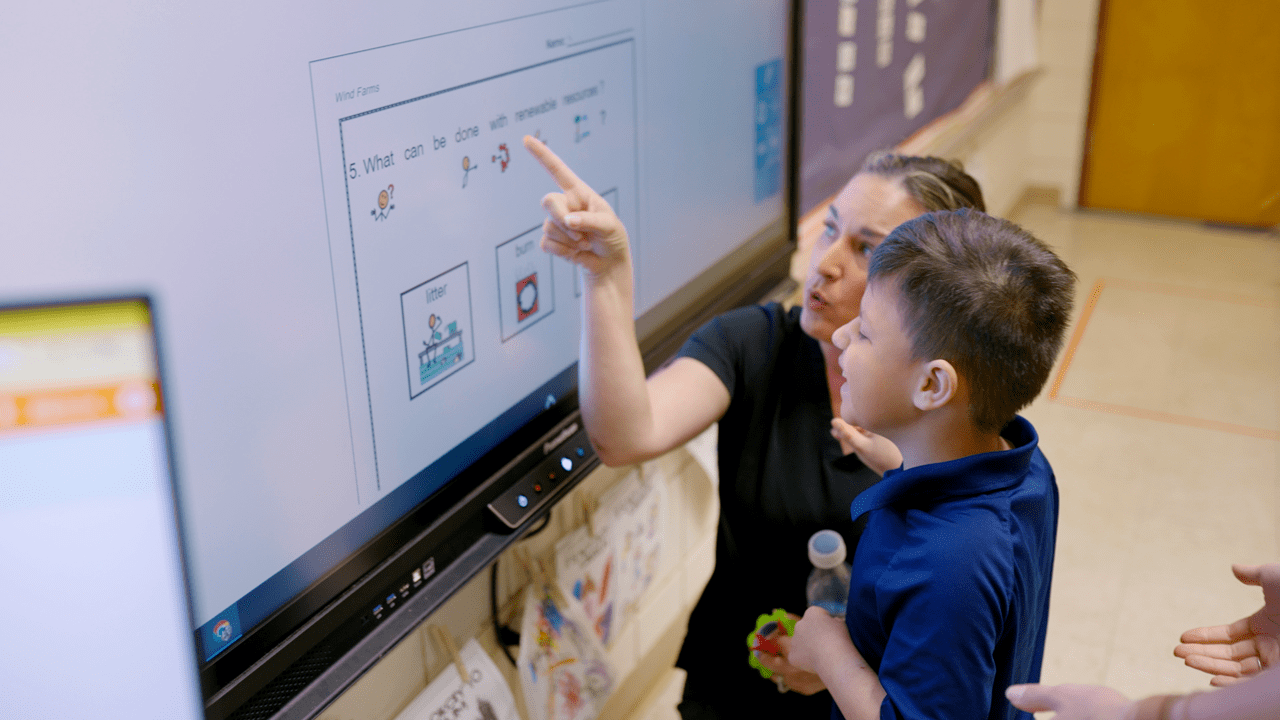Monitoring your student’s performance based on levels of support can be a helpful tool in determining their progress toward a goal. By tracking what you provide for each trial, you have a clear way to see incremental gains that may not otherwise be noticeable. When collecting data based on whether a student completes a task or not (yes/no data), you are able to track only that result. But by tracking the level of support or prompting that you provide, you can more clearly see if and how a learner is gaining skills and making progress toward mastery. And in doing so, you can more easily evaluate whether your instructional techniques are effective and meaningful.
Another benefit of monitoring performance according to levels of support is that you can see what steps may be more difficult within a chained skill (like washing hands, preparing food, or packing a bookbag). Once a specific area of difficulty is identified within that skill, you can refine or target your instruction to provide additional support or clarification for that step.
Defining Levels of Support
It is important for both your implementation and monitoring of this technique to clearly define the levels of support you plan to use. This puts you and your team on the same page and ensures that you are using the strategy consistently. When planning a hierarchy of support (defining the levels from least assistance to most assistance), choose the methods that are most effective for your student. For example, if your student is averse to physical contact, avoid using any type of physical prompting as a means of support.
Below is a general framework for defining different levels of support or prompting, although these could vary based on your student’s learning style and the skill being taught.
- Independence—a student is able to perform a skill or demonstrate a behavior without any prompt or reminder from another person
- Visual—a student relies on a visual cue or support to be reminded of how to perform a skill (like a checklist, a reminder card, or visual instructions)
- Gestural—a teacher provides a gestural cue (for example, by pointing) to draw the student’s attention to relevant information
- Verbal—a student is able to perform a skill when given a verbal cue or reminder
- Model—a student requires a demonstration of the target skill from a teacher
- Physical—a teacher provides a physical prompt by lightly tapping the student or lightly touching their elbow (partial physical prompt), or by providing hand-over-hand guidance to perform a skill (full physical prompt)
Planning for Data Collection
Once you and your team have clearly defined the types of prompting to use and have determined a hierarchy for support, it is time to plan for data collection. By properly monitoring the use of these levels of support, you will have data that highlights where incremental progress is being made and where progress may have plateaued. It can also give you valuable information about how to proceed with your instruction.
When monitoring the use of levels of support, it is important not only to indicate what support you provided during each trial, but also to note the student’s response to the given prompts. Typically, there are five possible student responses to expect.
- Unprompted, correct response—the student performs the skill or behavior with no additional support, at the independent level of the hierarchy
- Prompted, correct response—the student performs the skill or behavior with some level of support
- Unprompted error—student incorrectly performs the skill before being prompted
- Prompted error—the student incorrectly performs the skill even when given support
- No response—student does not respond at any level of given support
If your target skill is chained, or has multiple steps, be sure that data is collected for each step in the chain. This will help in identifying specific areas of difficulty for your student. Here’s a set of example data:

Analyzing Progress
A lack of progress or a plateau in progress may require some re-evaluation of planning or implementation. Ask yourself the following questions to help guide your next steps:
- Have you selected the appropriate prompting method and relevant levels of support for the given skill?
- Has your team implemented the levels of support with fidelity?
- Are you allowing enough wait time before prompting?
- Have you provided a meaningful and powerful reinforcer to increase your student’s motivation?
- Are you providing the correct teacher response to your student’s attempts at performing the skill?
With clearly defined levels of support and a consistently used hierarchy, your data collection will shed light on your next steps for instruction. Although your student may not have met the criteria for mastery, their responses across the different levels of support can show smaller steps toward mastery that they may have made. You and your student can find encouragement in these smaller successes that might otherwise have been missed.



